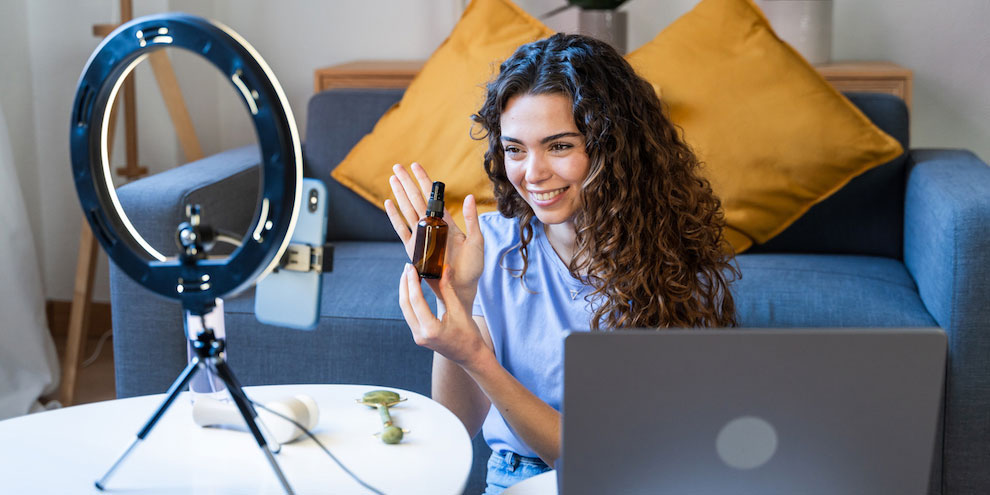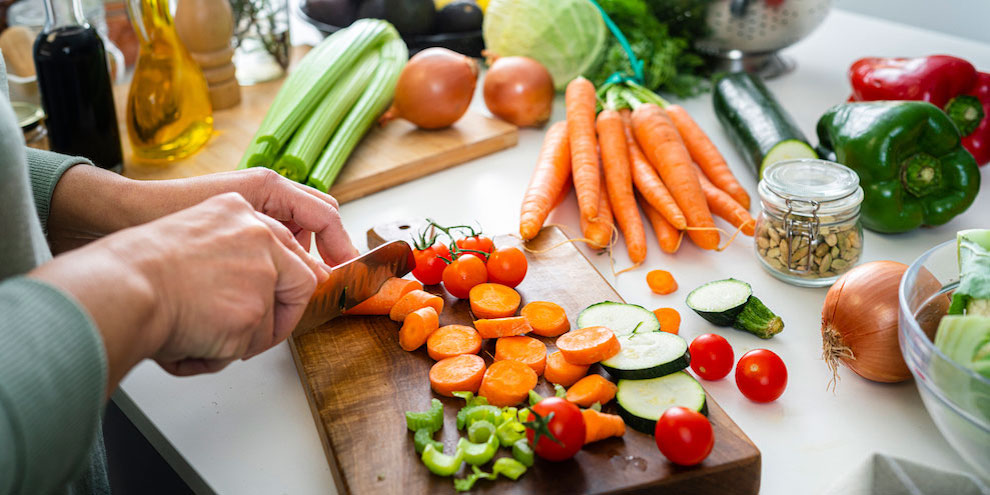••• shopper insights
Get the gifting done fast
Holiday shoppers aim shop early, efficiently

Fifty-four percent of holiday shoppers don’t view Black Friday and Cyber Monday as essential for their holiday shopping needs but 52% still plan to shop on those days, found Basis Technologies. Among this audience, 65% say they will shop early to avoid shipping delays and 62% want to get their shopping done as fast as possible.
TV ads (traditional and CTV) influence Millennials or Gen X holiday gift buying only 10% to 12% more than the average U.S. consumer. Baby Boomers are much less influenced by ads in any channel than the average consumer. For gift buying, Millennials and Gen Z tend to be more influenced by social media or general online media ads (ranges from 36% to 68% more) than the average consumer.
When considering their top personal influences, the main choices for holiday gift shoppers are the gift recipient (52%), recommendations from friends/family (47%) and customer reviews (35%) and only 28% of recipients say that brand familiarity influences them. Fifty-three percent will shop where there is free shipping, 51% are heavily influenced by sales and promotions and 53% of holiday gift shoppers prefer retailers that help them find unique gifts.
Fifty-seven percent of holiday shoppers plan to set a budget and stick to it. Fifty-six percent of respondents anticipate spending the same amount as last year with 29% expecting to spend a bit more. Seven percent aim to spend a bit less and only 1% say they will spend a lot less. Among respondents that say they will increase holiday shopping spend, inflation driving up gift prices was the choice cited most often (64%), followed by having more people to shop for this year (23%) and having more expensive items to gift (21%). Fourteen percent say they got a raise or new job that allows them to spend more on gifts this year.
The top reasons for those planning to decrease holiday shopping spend are economic worries (44%), uncertainty about the future (42%), having expenses that are prioritized over gifts (40%) and 20% say they have less people to shop for this year. Among respondents, 57% say holidays are an important part of their identity and 51% believe their holiday traditions connect them to their cultural background.
Sixty-one percent prefer to shop local or at small businesses, 56% are more likely to buy from retailers or brands that show they care for employees and 37% like to buy from minority/women owned stores and brands. Only 18% of holiday shoppers say they will shop “mostly” or “entirely” in person, 43% say they will do it “mostly” or “entirely” online and 39% say they will do it equally in person and online.
Seventy-two percent of respondents will buy gifts on a laptop or computer, 40% will make purchases through apps and 20% through social media. Forty-two percent of the Gen Z audience said they are likely to purchase holiday gifts through social media. Respondents that say they would buy gifts on social media cite Instagram (57%), Facebook (56%) and TikTok (43%) as their channel of choice.
Basis Technologies’ biannual holiday shopping study was conducted with audience research firm GWI and completed in May using responses from more than 2,000 U.S. consumers ages 16+.
••• travel research
More freedom to go
Young travelers want different airline program perks

Travelers are eager to fly and plan trips but they remain cost-conscious and, depending on the generation, less swayed by traditional airline loyalty programs, according to OAG’s latest survey. While loyalty and frequent flyer programs remain popular among all travelers, airlines need to reinvent their approach with younger travelers who are less likely to be enrolled than their older peers.
Only 65% of Gen Z and 70% of Millennials report being enrolled in airline frequent flyer programs, compared to 89% of Baby Boomers and 80% of Gen X. The No. 1 barrier to joining loyalty and frequent flyer programs is lack of consistent travel with a single carrier or brand (61%), followed by the amount of time it takes to redeem awards (14%) and a fear of airlines gaining access to data (8%). Respondents’ top incentives to sign up for an airline credit card are the option for free checked baggage (63%), the sign-up bonus (56%) and access to airport lounges (43%).
The survey suggests that the best way for airlines to improve loyalty program adoption and engagement is to allow customers to use earned points elsewhere in their travels. This speaks to younger generations’ desire to have rewards that are specific to their travel preferences and booking patterns. Fifty percent of Gen Z and 49% of Millennials want to use points with vacation rental providers. Seventy-three percent of all travelers desire to put their airline rewards program points towards hotel accommodations, followed by car rental services (53%).
Younger travelers prioritize experiential factors over cost, with Gen Z and Millennials being 27% more likely to pay up to $100 more for a ticket to fly with a legacy carrier as opposed to a low or ultra-low-cost carrier.
Most travelers purchase add-on services through an airline’s website (48%) or mobile app (37%), with only 10% opting for gate and 5% for in-flight purchases. Gen Z is the most likely to purchase add-ons on the plane (12%). Half of all travelers prefer to purchase add-ons at the time of booking, with 26% purchasing add-ons in between booking and check-in. Another 12% are likely to purchase add-ons at the time of check-in, 6% at the airport and 6% doing so in-flight. Although 67% of all travelers are willing to pay up to $20 to take more than one extra carry-on item into the cabin, 50% think too much luggage is being taken into the cabin and agree with airline policies getting stricter about carry-on baggage.
OAG surveyed 2,000 North American travelers in April 2024.
••• health care research
Skeptical of AI in health care
Clinicians don’t trust hospital leadership or the technology

Despite broad optimism about the benefits of generative AI in health care, those on the front lines of delivery have concerns about its implementation. Health care insight consultancy Day One Strategy revealed that nearly three in four clinicians have experience using large language model (LLM) generative AI programs, with ChatGPT being the most used by far (72%). Google LLMs, such as Bard, recently rebranded to Gemini (38%) and Med-PaLM (24%) and Meta’s Llama (19%) are the next-most popular.
More than half believe AI can save time (57%) and that it will transform health care delivery (56%) while exactly half believe AI use can help them deliver better patient care. Despite high levels of personal use and optimism for its future impact in health care, clinicians remain wary of using AI for health care in the near term with 31% being somewhat aware of AI developments and 11% remaining unaware of them.
Only 20% percent of respondents say their practice or clinic uses wearable devices, processing data from wearable devices to monitor patients’ vital signs. Twenty percent say their practice/clinic has used generative AI for clinical documentation to analyze information from unstructured clinical notes and 19% have used chatbots and virtual assistants to help with patient communication, appointment scheduling and to answer common health care questions. Most respondents say their practice/clinic does not use predictive analytics (60%) or diagnostic imaging (56%).
There is a higher level of mistrust (27%) than trust (22%) in the current AI algorithms. Two-thirds don’t trust their hospital/clinic leaders and don’t trust that AI will reduce liability with four in 10 believing that AI use will put them at greater risk of liability. Nearly half (42%) of clinicians are unprepared for the implementation of gen AI into their practice but 50% agree that implementation will require new training. Thirty-two percent, however, trust in their hospital/clinic leadership with the implementation of AI.
Less than one in five clinics are prioritizing gen AI in 2024 strategic objectives and only a tenth have seen a policy on the use of gen AI in their clinic/hospital. Meanwhile, six in 10 clinicians agree that AI in health care needs government regulation.
This online survey was conducted by QuestionPro on February 19, 2024 with a total of 501 adult respondents.
••• consumer research
Influenced by the influencer
Content from online creators drives Gen Z purchases

Nearly half of Americans (48%) have purchased a product they saw featured in creator-generated content, sometimes also called influencer content, on an entertainment app or social media platform, according to a consumer sentiment survey commissioned by CPG advertising effectiveness company NCSolutions.
Sixty-six percent of Gen Z have purchased a product that appeared in creator-generated content. Over half (55%) of Millennials, 41% of Gen X and 24% of Baby Boomers have also purchased a product they saw from influencer content on a social media platform or entertainment app.
When Americans see influencer-generated advertising, they feel entertained (47%) and ready to research the product (43%). Twenty-four percent are likely to share the endorsed product with friends and family and 23% feel inspired. Fifty-two percent of consumers earning $100,000 annually made a purchase on an entertainment app or social media platform based on a post, reel or video from a creator or influencer. Forty-six percent of those earning $50,000-$99,000 and 41% of those with incomes less than $50,000 made a purchase after viewing an endorsement in creator-generated content.
Gen Z has more favorable attitudes towards this content compared to other generations. After viewing creator-generated content for a product, 37% of Gen Z, compared to 23% of all other generations, expressed appreciation for creators sharing personal aspects of their lives. Additionally, 27% of Gen Z, compared to 12% of all other generations, feel strongly connected to influencers, like they are friends.
Twenty-seven percent of Gen Z, compared to 15% of all other generations, feel influencers are looking out for their viewers' best interests by endorsing only top-quality products. Twenty-two percent of Gen Z versus 14% of all other generations feel their needs were understood by influencers. Twenty-one percent trust influencers and their recommendations, compared to 13% of all other generations, and 16% of Gen Z feels represented by creators, compared to 9% of all other generations.
Consumers identified the elements of creator-generated advertisements that strike a chord with them. Things that make viewers laugh win the day, with 50% of Americans choosing humor as the No. 1 attribute. How-to videos were cited by 40%, followed by music (37%), authenticity (34%), storytelling (33%), product suggestions (27%) and the connection with the influencer (12%). Additionally, 9% of consumers enjoy filters as a part of their advertising experience.
NCSolutions commissioned the consumer sentiment survey of 1,124 Americans in May 2024.
••• sports research
More eyes, more cheers
Women’s sports gain momentum

Around the world, fans of women’s sports are watching more this year compared to last year. In the U.K. (36%), Australia (34%) and Spain (32%), one in three women’s sports fans are watching more this year, higher than in the U.S. (27%), Canada (29%), Germany (23%) and France (24%). According to a survey by SurveyMonkey and sports marketing and sponsorship platform Parity, 23% of men watch women’s sports daily or weekly, compared to 15% of women, refuting assumptions that women’s sports fans are primarily women. Additionally, 30% of men around the world are watching more women’s sports in 2024 compared to 2023.
Most respondents (88%) agree that professional women athletes are “somewhat” or “highly” impactful role models for young women. Respondents who watch women’s sports daily or weekly are 3.5x more likely to buy a product promoted by a woman athlete than another type of influencer. Respondents overall are more than twice as likely to buy a product promoted by a woman athlete over another influencer. Instagram is the top platform for following individual women athletes across all countries, followed by Facebook and YouTube. Australians (42%) are the most likely to follow women’s sports accounts on social media, followed by the U.S. (38%), U.K. (36%), Canada (39%), Germany (30%), Spain (34%) and France (26%).
Soccer and tennis are the most-watched women’s sports internationally in all countries surveyed. The U.S. (56%) is the exception, where basketball is by far the most-watched sporting event, compared to 25% or less viewership in all other countries.
The global majority agree that women athletes are being shortchanged and want more brand investment in them. Equity in women’s sports still has a long way to go. Half or more in each country believe that brands are not investing enough in women’s sports compared to men’s sports with 50% in the U.S., 50% in the U.K., 51% in Australia, 56% in Canada, 53% in Germany, 59% in Spain and 66% in France.
Despite a growing interest in women’s sports, a lack of time to watch remains a barrier, especially for women. It’s the main barrier for 43% of Germans and many in the U.K. (41%), Spain (40%), the U.S. (40%), Australia (39%), Canada (39%) and France (35%). Globally, women are overall more likely than men to report lacking sufficient time to watch women’s sports (42% vs. 39%). More than double 18-34-year-olds (7%) compared to 65+ (3%) cite cost as a barrier to viewing. This shows an increase in interest among generations but a lack of accessibility. Women and gender non-conforming respondents are also slightly more likely than men to say the cost of watching women’s sports is a barrier.
This SurveyMonkey poll was conducted March 28-April 10, 2024, among a national sample of 5,408 U.S., 1,972 U.K., 1,251 Australian, 1,743 Canadian, 1,290 German, 1,193 Spanish and 1,517 French adults 18+.
••• lifestyle research
The joy of cooking
Gen Z, Millennials see healthy eating as an affordable pleasure

Gen Z and Millennials are leading a movement towards healthy eating amid the current cost-of-living crisis by scaling back on non-essentials, including streaming services, according to a survey by healthy eating platform Lifesum. To prioritize spending on healthier foods, Gen Z and Millennials would cut back on fashion (62%), tech and gadgets (55%), online courses (37%), streaming services (36%), travel (34%) and skincare and beauty (30%). Only 10% of respondents indicated that it is not a priority for them.
For Gen Z and Millennials, healthy eating has emerged as an affordable and accessible source of pleasure, particularly at a time when indulging in major experiences like travel may seem unattainable. Millennials and Gen Z are leading the shift towards healthier eating habits as they juggle increasingly hectic lifestyles and seek novel experiences through food. Sixty-three percent of respondents say they are omnivores, 14% consider themselves flexitarians, 8% are vegetarians, 7% are pescatarians and 4% follow vegan diets. When it comes to sustainable eating practices, 44% say they practice seasonal eating, others locally source items (40%) and others make sustainable seafood choices (20%). Some respondents follow a plant-based diet (28%), prioritize zero-waste cooking (25%), have their own home gardens (24%) and compost (22%) to make a difference.
Healthy eating has become the dominant force in the food industry and the desire for well-being and nutritious food options are influencing other areas of people's lives, including work. Sixty-nine percent say they would be more productive at work if their employer helped improve their health and well-being and a staggering 71% are prepared to quit their job tomorrow for one that better supports their well-being.
Gen Z and Millennials are embracing functional foods that provide additional health benefits, such as improving digestion, boosting immunity or enhancing cognitive function. Seventy-three percent are consuming these foods to boost energy levels, 61% to enhance mental well-being and 40% to promote better sleep. Others are most intrigued by the ability to improve gut health (65%), skincare (26%) and hormones (40%).
Lifesum's 2024 State of Healthy Eating and Wellbeing Report is based on a survey of 10,000 Gen Z and Millennial app users. The data was manually obtained from Lifesum’s internal database and surveys from December 2023.
